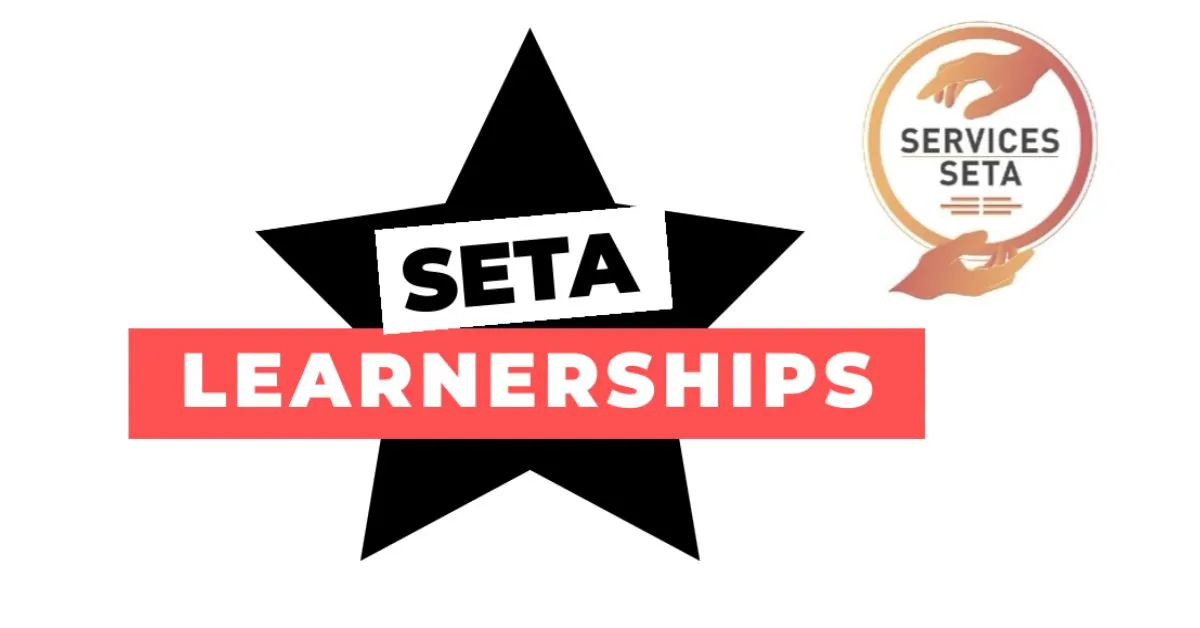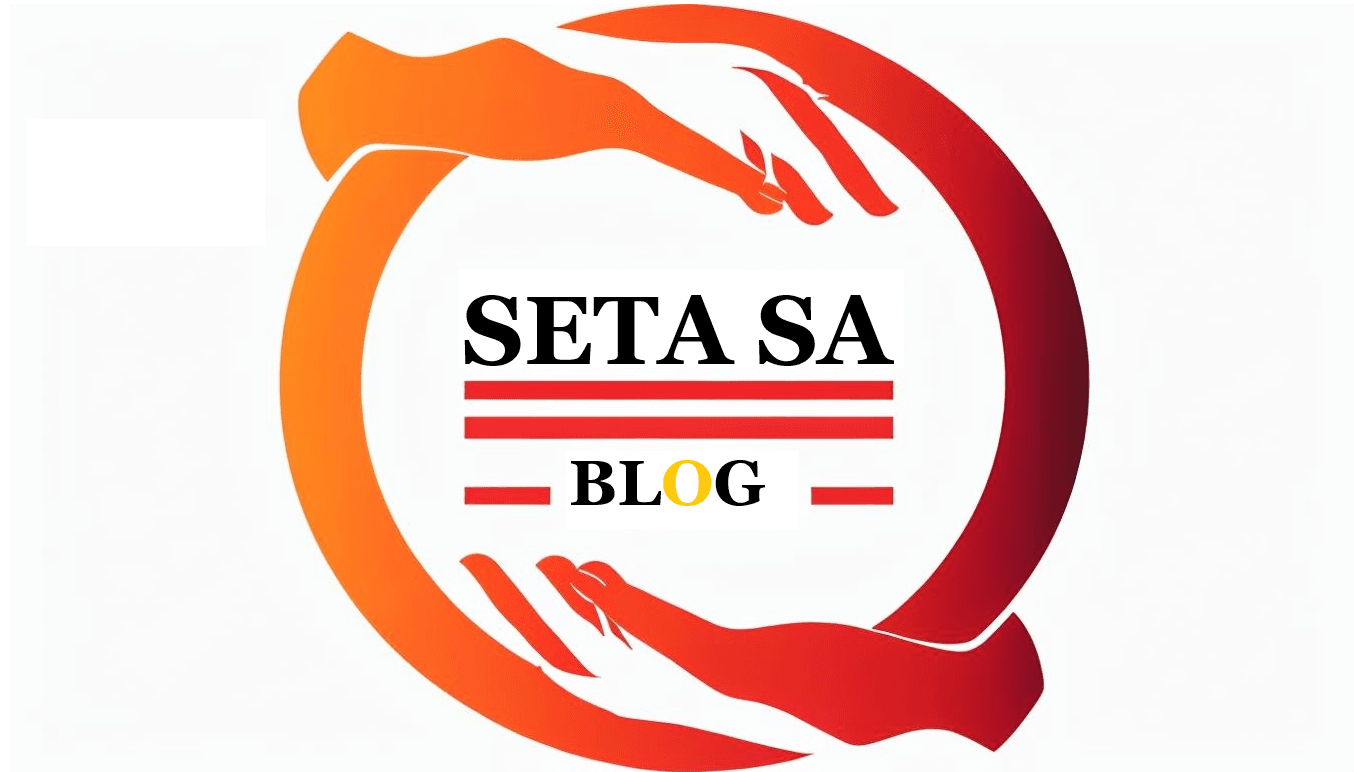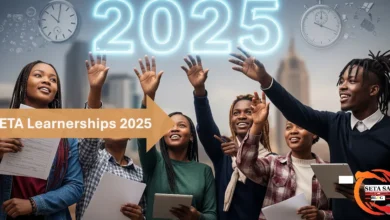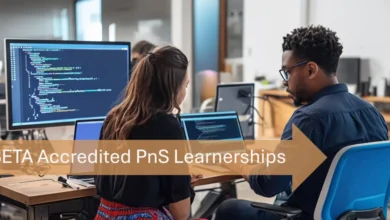Latest 2025 SETA Learnerships in South Africa – Your Complete Guide to Apply and Succeed

South Africa’s job market can feel like a locked door—unless you have the right key. For thousands of young people, SETA learnerships have been that key, opening doors to real skills, real work experience, and real careers. Whether you dream of working in IT, business, engineering, or agriculture, these programs are designed to bridge the gap between classroom theory and workplace reality—and the best part? You get paid while you learn.
Understanding SETA Learnerships – And Why They Matter in 2025
SETA (Sector Education and Training Authority) learnerships are more than just short training programs. They’re structured pathways combining classroom learning with hands-on workplace experience, leading to an NQF-recognised qualification registered with the South African Qualifications Authority (SAQA).
In 2025, they’re more important than ever. With youth unemployment still a national challenge, learnerships give job seekers a way to gain practical skills without the financial strain of traditional study—while employers get the chance to shape talent for their industries.
Why a SETA Learnership Could Change Your Career Path
For Learners:
- Hands-on skills that employers actually look for.
- Monthly stipend to cover transport and living costs.
- Recognised qualifications on the National Qualifications Framework (NQF).
- A direct route to career opportunities or further education.
For Employers:
- Build a custom-trained workforce.
- Earn B-BBEE scorecard points under Skills Development.
- Benefit from tax incentives.
- Boost productivity through employees who understand your systems from day one.
Which SETA Learnerships Are Hot Right Now?
Here’s a sector-by-sector snapshot of popular programs in 2025:
Services SETA – Business admin, real estate, personal care, marketing.
MICT SETA – Software development, cybersecurity, network admin, digital media.
FoodBev SETA – Food processing, quality control, beverage manufacturing.
Other SETAs – Agriculture, construction, education, banking, energy, tourism.
How to Find and Apply for SETA Learnerships in 2025
Best places to search:
- Official SETA websites (e.g., Services SETA, MICT SETA, AgriSETA).
- Department of Higher Education & Training (DHET) portal.
- Career platforms like Indeed, CareerJunction, PNet.
- Company career pages (Sasol, Transnet, Nedbank, etc.).
- LinkedIn job postings and Facebook career groups.
Application tips that work:
- Use targeted search phrases like “MICT SETA software learnership 2025”.
- Keep your CV updated with relevant skills.
- Submit early—slots often fill fast.
- Follow instructions precisely (e.g., certified documents within 3 months).
What You’ll Need Before You Apply
Documents checklist:
- Certified SA ID copy.
- Certified qualification certificates.
- Updated CV.
- Proof of address (less than 3 months old).
- Completed application form (if required).
- Motivational letter tailored to the program.
Common mistakes to avoid:
- Late submissions.
- Wrong or expired documentation.
- Generic, copy-paste applications.
- Ignoring the exact instructions provided.
Acing the Interview
Expect a mix of personal, situational, and technical questions. Many SETAs also include basic assessments in numeracy, literacy, or logic.
Pro interview tips:
- Research the company and sector before the call.
- Dress professionally—even for virtual interviews.
- Be honest if you don’t know an answer.
- Ask one or two smart questions about the role.
From Learner to Success Story
Thabo’s breakthrough: From unemployed to junior manager in 12 months through a Business Administration learnership.
Lindiwe’s leap: From no IT background to junior software developer after a 12-month MICT SETA program.
These aren’t exceptions—they’re examples of what happens when opportunity meets preparation.
Why Employers Should Get Involved
Businesses benefit too:
- Access to funding and tax rebates.
- Skilled employees trained to company standards.
- Improved B-BBEE standing.
- Long-term talent retention.
Learnerships vs Internships – The Key Difference
| Feature | Learnership | Internship |
|---|---|---|
| Qualification | NQF-recognised | No formal qualification |
| Duration | 12–24 months | 3–12 months |
| Structure | Theory + practice | Mostly workplace practice |
| Stipend | Always paid | Sometimes unpaid |
Take the First Step Today
Every week in South Africa, new SETA learnerships open for applications—across industries, skill levels, and regions. If you’re ready to build skills, earn while you learn, and open doors to your future, now’s the time to apply.
FAQs
Yes—just customise each application.
Absolutely—many are designed specifically for inclusive participation.
No—most are for entry-level candidates.
Yes, if it’s an officially registered SETA program.
Not guaranteed—but many learners are hired by their host companies.




